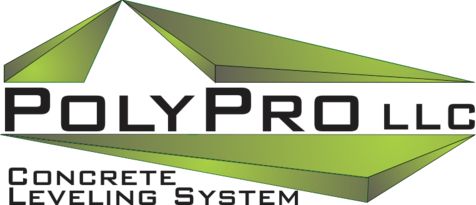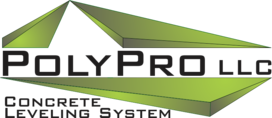We ONLY Use the BEST Foam...
made by HMI
How is HMI foam different?
HMI is the ONLY company that makes
polyurethane foam from recycled material.
- Reclaimed foam is used to manufacture HMI plural component
foams.
- Available in 2 lb. (RR201), 4 lb. (RR401), 4 lb. hydrophobic (RR401G), and 5 lb. (RR501)
- HMI has developed this revolutionary foam that is setting new standards in polyurethane foam quality.
- ASTM tested this recycled material as the best foam available for raising settled concrete.
- Each foam is specifically designed for applications like lifting, high density lifting, stabilization and undersealing.
For Technical Data or MSDS information please contact HMI at
800-626-2464.
Recycled foam offers these Benefits:
* Fast tact free time
* High compressive strength lift
* No concrete adhesion
* Fast and aggressive expansion for lifting concrete
* Delayed cure time for slab manipulation assuring a perfect lift
FOUNDATION REPAIR OPTIONS IN central mississippi
There are only two choices when it comes to repairing a settled or sunken concrete slab: replace it or raise it. Before the use of polyurethane and Poly jacking, the common methods of raising and supporting a slab was with the use of slab piers or by mudjacking. Following is a brief description of the options to consider when you're raising a sunken slab.
Poly Jacking, also called Foam jacking, lifts and raises settled slab foundations by injecting high density polyurethane foam under the slab, where it expands and pushes the slab back into place. The lifting is gentle and over a large area at once, which helps to ensure the most complete lifting of all the methods.
Mudjacking, also called Slabjacking, lifts and raises settled slab foundations by pumping sand-based grout under the slab. The mechanical force of the pump pushes the slab back into place. Mud jacking tends to be pretty messy, and is best used for unoccupied areas of the home.
Slab piers are pushed or driven into the ground. A hydraulic jack is then connected to the the pier to raise the floor. However, the jack causes a point load and will often crack the slab. Once the slab is cracked, further lifting is difficult. Slab piers are very disruptive and very expensive. Many local foundation repair companies install piers for lifting slab foundations, but its high cost and low success at lifting makes it unappealing. We recommend Poly jacking for slab foundation lifting in all but the most unusual circumstances.
Replacement is the most expensive of the slab foundation repair methods. It is also incredibly disruptive and could lead to multiple problems in other areas of the structure if not properly braced during the removal of the slab.
Cost of Repair
Other than the high cost of slab replacement, the cost of repair varies greatly between the foundation raising methods; given that each method varies greatly in the disruption it causes to the use of the structure. For example.. the use of slab piers is both the most disruptive and the most expensive method, yet it has the lowest ability to lift the slab back into place. Costs are influenced by other factors including but not limited to:
* The location of the structure
* The condition of the foundation,
* The characteristics of the underlying soil
* The expense of the material being used.
POLYURETHANE OFFERS
NUMEROUS ADVANTAGES OVER
TRADITIONAL METHODS OF RAISING SLABS


Additional Benefits of Polyurethane Foam
Cost Effective: Concrete raising is typically about half the cost of replacing the same concrete. Ultimately, the cost of raising or stabilizing concrete with polyurethane is a direct reflection of how much leveling material the project will require.
Time: Ready to use immediately!
Clean Work Environment: No concrete or grout splatter and no wash down needed.
Smaller Holes: Polyurethane concrete raising drills a nearly invisible 5/8 inch hole and the process calls for considerably fewer holes than traditional mudjacking; Minimal patchwork is needed.
Lightweight: This material will never lose density, is permanent and weighs only about 2 lbs. per cubic foot. Compared to traditional Mudjacking material, which weighs on average 100 lbs per cubic foot.
Green: The poly foams we use are environmentally friendly, consisting of 39-49% renewable and recycled materials. This foam is a top-of-the-line material, designed specifically for different concrete applications, it allows us to easily adjust our approach to your needs.
Mudjacking v/s Polyja cking… Pros & Cons
MUDJACKING
Pros
• Less expensive – Mudjacking is less expensive than polyurethane concrete raising, so it may be a good choice if you’re on a tight budget.
• Familiar process – Many foundation repair companies are familiar with mudjacking because the process has been around so much longer.
Cons
• Shorter lifespan – Mudjacking won’t last as long because the fill materials will eventually lose density.
• Heavier – The fill is heavier, creating more of a burden on the soil.
• More noticeable – Because the fill material is heavier, more and larger injection holes are required. This is problematic when the repair work is being done on a visible surface, such as a concrete slab or sidewalk.
POLYJACKING
Pros
• Lasts longer – Polyurethane concrete raising lasts much longer because the material never loses its density.
• Lightweight – The lightweight polyurethane fill creates less of a burden on the soil than mudjacking.
• Nearly invisible – Because the material is so lightweight, fewer and smaller injection holes are required, making it difficult to tell that repair work has been done.
Cons
• More expensive – Polyurethane concrete raising is more expensive. If you’re on a tight budget, it may not be the best option.
• Newer process – Because the process has only recently been applied to residential applications, you may have a tough time finding a qualified professional in your area.






